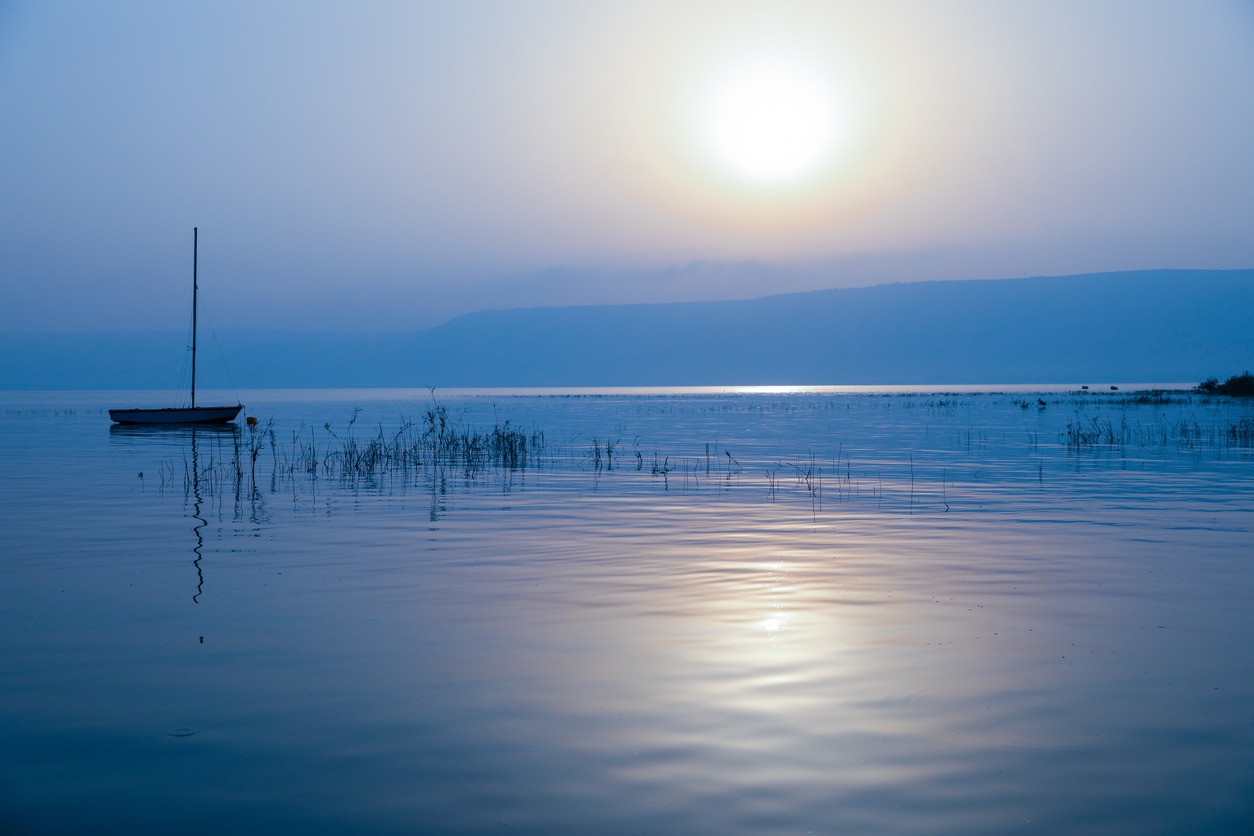But would you believe it? In 2010, fishing was banned in the Sea of Galilee. The Israeli government stated that chronic over-fishing had severely depleted stocks. The ban was to be in effect for 2 years.
In 2013, they dumped several thousand fish into the lake. The type of fish were tilapia and silver carp which were expected to increase the lake’s biodiversity and clear its waters of toxins. In 2020 it was reported that the lake (sea) had dried up because of a drought; and then it swelled up because the drought was followed by wet winters. Per a report dated April 15, 2022, Israel was going to give the Sea of Galilee an “extreme makeover” by filling the lake with excess output from desalination plants.
Image credit: Fishing in the Sea of Galilee | Israel Inside Out
It's a technicality but the Sea of Galilee is not really a sea. It's a lake; a freshwater lake. Israel's largest freshwater lake to be precise. It is also known by the following alternate names:
• Lake Tiberias
• Sea of Tiberias
• Lake of Gennesaret
• Lake Kinneret
• The Kinneret
FUN FACT: In ancient times. there were three (3) types of fish mainly caught by fishermen: sardines; barbels; and musht or tilapia (the 'Galilean tilapia' is known today as “St. Peter’s Fish”).
It's 2022. Fishing is being allowed in the Sea of Galilee. The original St. Peter’s fish in the Sea of Galilee cannot be found anymore. However, there are 18 species of fish indigenous in the Sea, which includes tilapia, sardine, and catfish.
Image credit: Fishing in the Sea of Galilee | Israel Inside Out
It's a technicality but the Sea of Galilee is not really a sea. It's a lake; a freshwater lake. Israel's largest freshwater lake to be precise. It is also known by the following alternate names:
• Lake Tiberias
• Sea of Tiberias
• Lake of Gennesaret
• Lake Kinneret
• The Kinneret
FUN FACT: In ancient times. there were three (3) types of fish mainly caught by fishermen: sardines; barbels; and musht or tilapia (the 'Galilean tilapia' is known today as “St. Peter’s Fish”).
It's 2022. Fishing is being allowed in the Sea of Galilee. The original St. Peter’s fish in the Sea of Galilee cannot be found anymore. However, there are 18 species of fish indigenous in the Sea, which includes tilapia, sardine, and catfish.


No comments:
Post a Comment
Note: Only a member of this blog may post a comment.